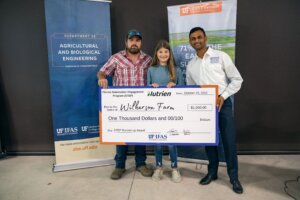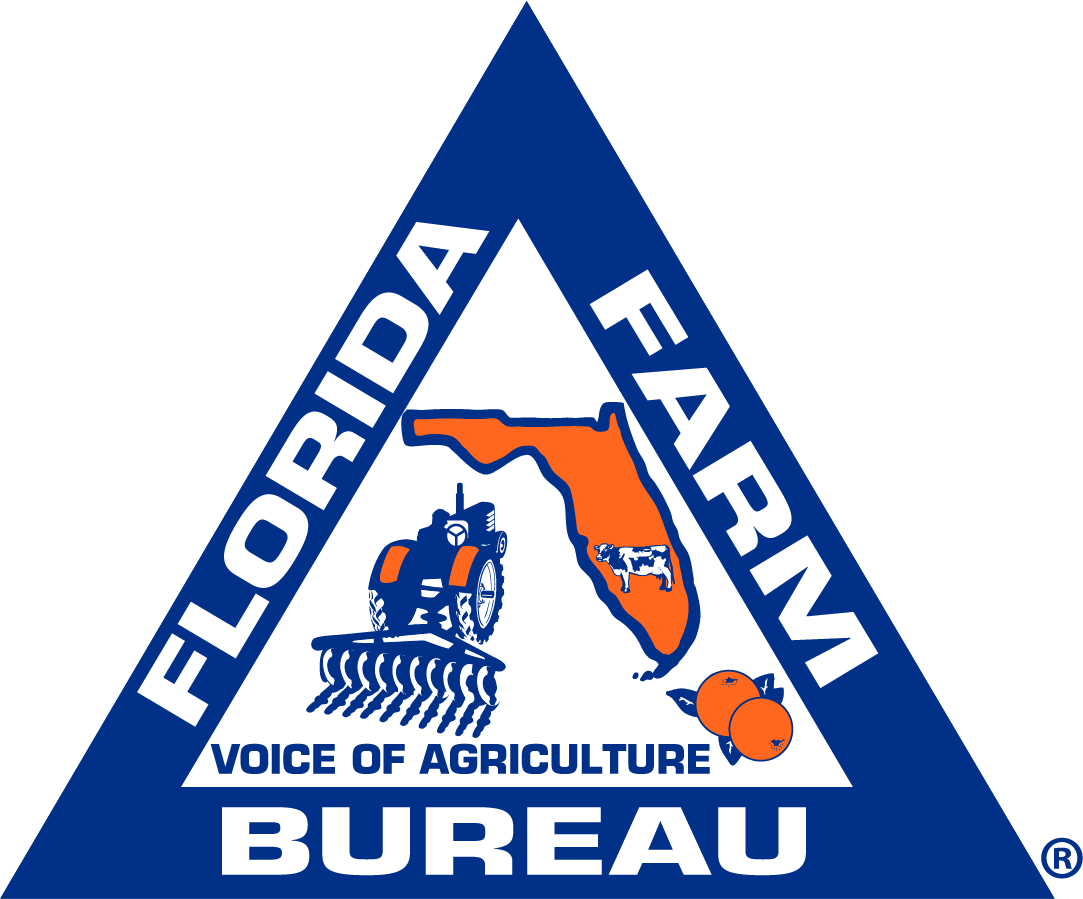April 2024 FloridAgriculture eNewsletter

By Rob Gilbert
[email protected]
@IFAS_VP
Vivek Sharma has grant money, soil moisture probes, a lab, brilliant graduate students, and the full backing of a UF/IFAS faculty appointment to figure out how to get maximum yield with minimal environmental impact.
Gilchrist County Farm Bureau board member BJ Wilkerson he’ll have about 40 harvests in his lifetime and a young daughter interested in farming to figure out the same thing.
Sharma develops the science that underpins best management practices. Wilkerson makes changes to his practices based on observation, and thanks, to UF/IFAS, increasingly based on consultation with his daughter.
 Sharma and the Wilkersons’ combined expertise has developed a better understanding of what works for corn. Their partnership exemplifies UF/IFAS and Florida Farm Bureau’s decades-long cooperation.
Sharma and the Wilkersons’ combined expertise has developed a better understanding of what works for corn. Their partnership exemplifies UF/IFAS and Florida Farm Bureau’s decades-long cooperation.
We even jointly throw a party to highlight the farmers who demonstrate their environmental stewardship through best management practices, or BMPs. The Farm Bureau funds Suwannee CARES, and UF/IFAS hosts an awards night – this year on May 2 – at its North Florida Research and Education Center—Suwannee Valley (NFREC-SV) in Live Oak.
Improving water quality is one of Florida’s greatest challenges, but because of the partnership between UF/IFAS and the Florida Farm Bureau, it can also be one of our greatest scientific, environmental, and agricultural successes.
The Wilkerson family was recognized at Suwannee CARES in 2022 as one of those successes. And they’re looking to achieve even more with Sharma, NFREC-SV assistant center director Bob Hochmuth and Gilchrist County agriculture and natural resources Extension agent Tyler Pittman.
Hochmuth has run watermelon trials on Wilkerson’s farm in Trenton. Pitman is currently experimenting with controlled release fertilizers on Wilkerson’s land.
Two years ago, Sharma set up Florida Stakeholder Engagement Program (STEP) Corn Contest plots for 10 farmers at NFREC-SV, thanks to funding from the Florida Department of Agriculture and Consumer Services. He put out a call for participants. The idea was to do the farming for them as they directed and give them data and photos, and the farmers would respond with decisions on seeding rate, nitrogen management, irrigation, insurance selection and grain marketing.
Wilkerson was among those who heard from Sharma. At the time his daughter was telling Wilkerson she wanted to be a farmer just like her dad, grandfather, and great-grandfather. Wilkerson also wanted to do everything he could to protect the land and natural resources on which Kelsey would be depending 40 harvests from now.
They were one of winners of the competition and collected a $1,000 check as the top overall performers. You can guess who ultimately cashed it.
I’m excited to attend this year’s Suwannee CARES to hear more inspiring stories about how university-Farm Bureau-agency partnerships are using BMPs to protect water quality.
The scientist-grower partnership really hits home with me, because I came up through the ranks of UF/IFAS at the Everglades Research and Education Center. Scientists, growers, and agency officials working together there have used BMPs to reduce phosphorus runoff by 57 percent.
Farmers, of course, see themselves as environmental stewards. But they can’t build environmental stewardship into the price of their crop, and they can’t even convince some people that it’s part of their practices and ethic.
In that atmosphere, the daddy-daughter victory and the CARES award mean a lot to Wilkerson.
“We get put down a whole lot more than we get picked up,” Wilkerson says. “It’s nice to know at least somebody thinks we’re headed in the right direction.”
Rob Gilbert is the University of Florida’s interim senior vice president for agriculture and natural resources and leader of the UF Institute of Food and Agricultural Sciences (UF/IFAS).
